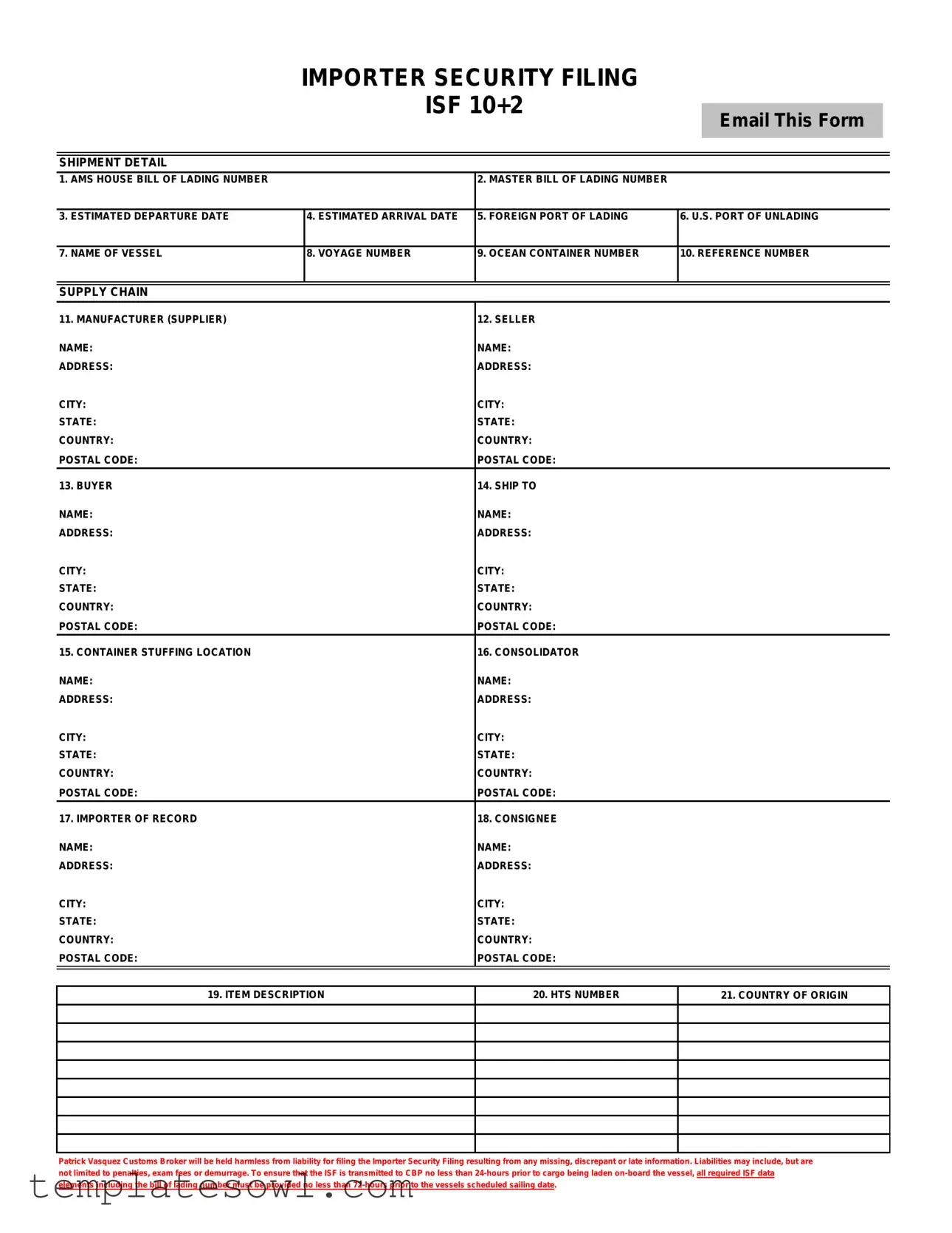What is the Importer Security Filing (ISF) form?
The Importer Security Filing (ISF) form, often referred to as ISF 10+2, is a document required by U.S. Customs and Border Protection (CBP). It provides advance information about cargo entering the United States. This filing aims to enhance the security of the international supply chain and ensure that cargo does not pose a risk to U.S. safety and security. The ISF must be filed no less than 24 hours prior to the shipment being loaded onto the vessel.
What details are required in the ISF form?
The ISF form requests several key pieces of information that fall into two categories. The first category, often referred to as the "10," requires details such as the AMS house bill of lading number, master bill of lading number, estimated departure and arrival dates, foreign port of lading, U.S. port of unlading, name of vessel, voyage number, ocean container number, and reference number. The second category, or the "2," includes information about the manufacturer, seller, buyer, ship-to party, container stuffing location, consolidator, importer of record, consignee, item description, HTS number, and country of origin.
Who is responsible for filing the ISF?
What happens if the ISF is filed late or inaccurately?
If the ISF is submitted late or contains discrepancies, several consequences can arise. Importers may face penalties from CBP, such as fines or fees. Additionally, late filings can result in increased scrutiny of shipments, leading to examination fees or demurrage costs. Ultimately, accurate and timely submission of the ISF is crucial to avoid these potential liabilities.
When should the ISF be filed?
The filing process should ideally take place well before the cargo is loaded onto the vessel. The required ISF data elements must be provided at least 72 hours prior to the ship’s scheduled sailing date. This timeline allows for any necessary adjustments and ensures that the information is transmitted to CBP at least 24 hours before departure.
What should an importer include as part of the item description on the ISF?
The item description on the ISF form must be clear and detailed enough to identify the merchandise being shipped. This might include the product type, material composition, and any specific features that differentiate it from other items. A well-defined item description can facilitate smoother processing and customs review.
Is there a specific format for the HTS number?
Yes, the Harmonized Tariff Schedule (HTS) number requires a specific format consisting of at least 10 digits. This number is essential for classification purposes and helps determine the tariffs and duties that may apply to the imported cargo. Accurate HTS numbers ensure compliance with trade regulations.
What information is needed for the 'Importer of Record' section?
For the 'Importer of Record,' the ISF form requires the name, address, city, state, country, and postal code of the entity or individual responsible for ensuring compliance with customs regulations. This includes all obligations related to the importation of goods, including payment of duties and taxes.
What is the role of the customs broker regarding the ISF?
A customs broker like Patrick Vasquez can assist importers in preparing and submitting the ISF form accurately and on time. They provide expertise in navigating the complexities of customs regulations and can help ensure that all required information is included. However, it's important to note that while a customs broker can file the ISF, the ultimate responsibility remains with the importer.
Can I amend the ISF after it has been filed?
Yes, amendments can be made to the ISF if new information comes to light or if errors are discovered after submission. However, it is crucial to make these amendments as soon as possible to avoid potential penalties. Importers should work closely with their customs broker to ensure that all updates are addressed promptly and accurately.

